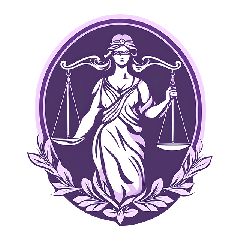Art. 694 Nuisance is defined as Any act, omission, establishment, business or condition of property or anything else which: (ISAHO)
- Injures/endangers the health or safety of others;
- Shocks, defies or disregards decency or morality;
- Annoys or offends the senses;
- Hinders or impairs the use of property; or
- Obstructs or interferes with the free passage to any public highway or street, or body of water.
In simplistic terms, it is defined as anything that offends the senses.
Kinds of Nuisance
As to the number of persons affected:
- Public (or common) – One that affects a community or neighborhood or any considerable number of persons although the extent of the annoyance, danger or damage upon individuals may be unequal
- Private – one which affects an individual or few persons only
Other Classifications:
- Nuisance per se – nuisance at all times and under all circumstances regardless of location and surrounding.
- Nuisance per accidens – nuisance by reason of circumstances, location, or surroundings.
- Temporary – That kind which if properly attended does not constitute a nuisance;
- Permanent – That kind which by nature of the structure creates a permanent inconvenience;
- Continuing – That kind which by its nature will continue to exist indefinitely unless abated;
- Intermittent – That kind which recurs off and on and may be discontinued anytime;
- Attractive Nuisance – One who maintains on his premises dangerous instrumentalities or appliances of a character likely to attract children in play, and who fails to exercise ordinary care to prevent children from playing therewith or resorting thereto, is liable to a child of tender years who is injured thereby, even if the child is technically a trespasser in the premises.
Attractive nuisance doctrine
- Doctrine: One who maintains on his estate or premises an attractive nuisance without exercising due care to prevent children from playing therewith or resorting thereto, is liable to a child of tender years who is injured thereby even if the child is technically a trespasser in the premises
- Basis of liability: the attractiveness is an invitation to children
Is a swimming pool an attractive nuisance?
- No. A swimming pool or water tank while it may come as an attractive nuisance, isn’t. For merely being an imitation of work of nature, it cannot be considered an attractive nuisance; hence, in case children play around unsupervised, the owner is not liable.
Art. 696. Every successive owner or possessor of property who fails or refuses to abate a nuisance in that property started by a former owner or possessor is liable therefor in the same manner as the one who created it.
Art. 697. The abatement of a nuisance does not preclude the right of any person injured to recover damages for its past existence.
Art. 698. Lapse of time cannot legalize any nuisance, whether public or private.
Art. 699. The remedies against a public nuisance are:
(1) A prosecution under the Penal Code or any local ordinance: or
(2) A civil action; or
(3) Abatement, without judicial proceedings.
Art. 700. The district health officer shall take care that one or all of the remedies against a public nuisance are availed of.
Art. 701. If a civil action is brought by reason of the maintenance of a public nuisance, such action shall be commenced by the city or municipal mayor.
Art. 702. The district health officer shall determine whether or not abatement, without judicial proceedings, is the best remedy against a public nuisance.
Art. 703. A private person may file an action on account of a public nuisance, if it is specially injurious to himself.
Art. 704. Any private person may abate a public nuisance which is specially injurious to him by removing, or if necessary, by destroying the thing which constitutes the same, without committing a breach of the peace, or doing unnecessary injury. But it is necessary:
(1) That demand be first made upon the owner or possessor of the property to abate the nuisance;
(2) That such demand has been rejected;
(3) That the abatement be approved by the district health officer and executed with the assistance of the local police; and
(4) That the value of the destruction does not exceed three thousand pesos.
Art. 705. The remedies against a private nuisance are:
(1) A civil action; or
(2) Abatement, without judicial proceedings.
Art. 706. Any person injured by a private nuisance may abate it by removing, or if necessary, by destroying the thing which constitutes the nuisance, without committing a breach of the peace or doing unnecessary injury. However, it is indispensable that the procedure for extrajudicial abatement of a public nuisance by a private person be followed.
Art. 707. A private person or a public official extrajudicially abating a nuisance shall be liable for damages:
(1) If he causes unnecessary injury; or
(2) If an alleged nuisance is later declared by the courts to be not a real nuisance.
